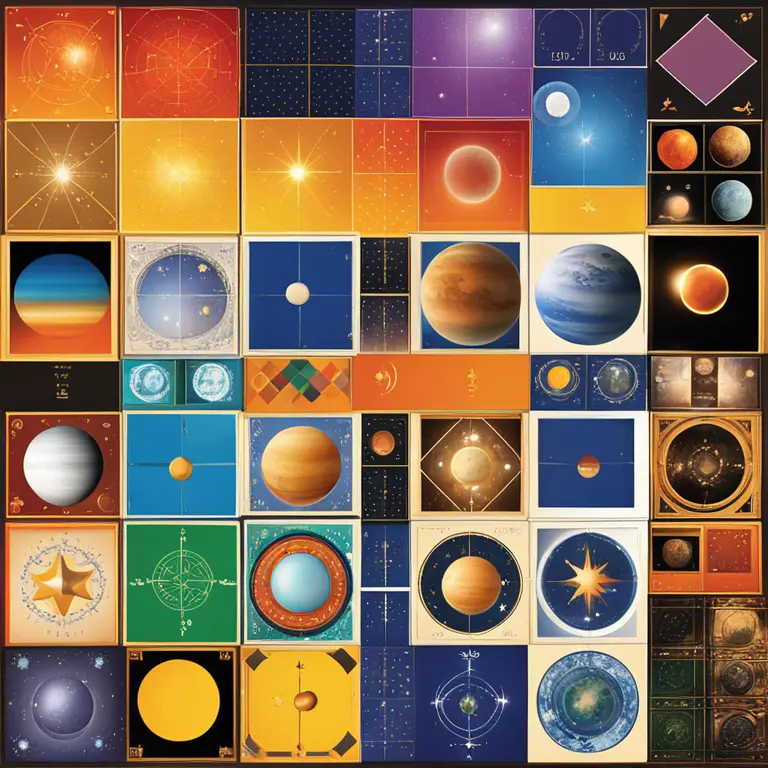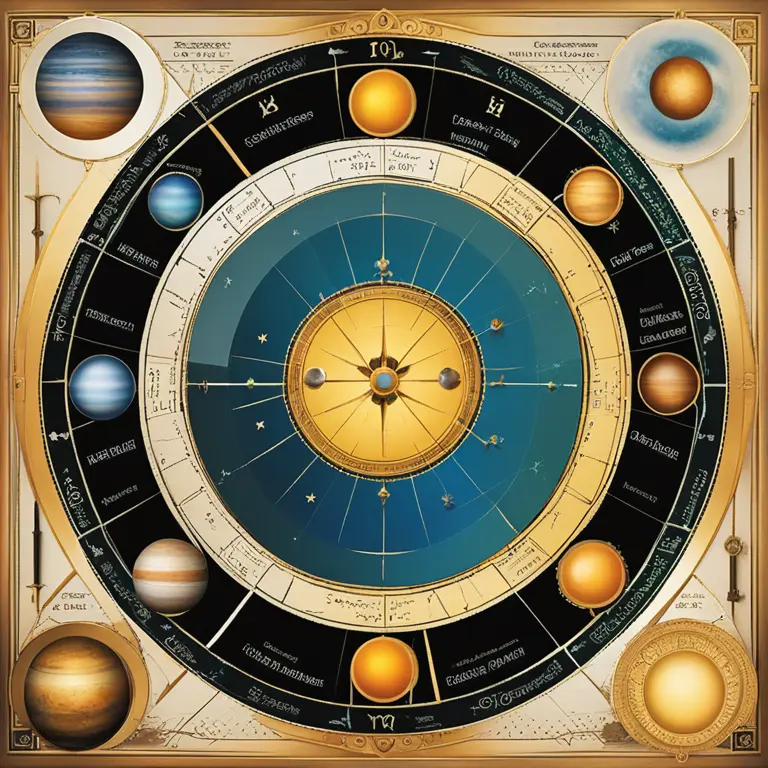
Your Birth Chart FAQs
Get insights on what your birth chart can reveal about you. This article covers common questions about birth charts and their significance.
article by Priya Deshmukh
What is a Birth Chart?
A birth chart, often called a natal chart, is a celestial snapshot of the sky at the moment of your birth. In astrology, it is believed that the positions of the sun, moon, planets, and stars at your exact time of birth have a profound impact on your personality, relationships, and life events. A birth chart is a tool used by astrologers to decipher these cosmic influences and how they interplay with your daily life. By considering the chart's components – signs, houses, aspects, and planetary placements – astrologers provide insights into your strengths, challenges, and potential paths.

Primary Components of a Birth Chart
There are several key elements in a birth chart. First, there are the zodiac signs, which impart unique characteristics influenced by their ruling planets. Second, the twelve houses represent different areas of life, such as career, family, and relationships. Third, the planetary placements in these signs and houses indicate the diverse energies at play in various aspects of your life. Lastly, the aspects, or angles between planets, represent interactions between the cosmic forces. Understanding these elements is crucial to interpreting a birth chart accurately.

Personal Significance of Planetary Positions
Each planet governs specific facets of your life and personality. The sun represents your core identity, while the moon governs emotions and intuition. Mercury influences communication, Venus shapes love and beauty, and Mars is associated with action and drive. Jupiter reflects expansion and growth; Saturn is linked to discipline and limits. Uranus indicates innovation, Neptune relates to spirituality and imagination, and Pluto symbolizes transformation. The specific houses in which these planets reside further refine their significances in your chart.
Understanding Astrological Aspects
Aspects are essential in a birth chart as they describe the angular relationships between planets. Conjunctions represent combined energies, whereas oppositions indicate potential conflicts or balances to be achieved. Trines and sextiles generally suggest harmony and talents, while squares and quincunxes can signify challenges or tensions that might require attention and work to overcome. These relationships can help pinpoint areas of natural skill as well as growth opportunities.
The Impact of Transits and Progressions
Transits and progressions are methods used to understand how current planetary movements interact with your birth chart, offering insights into personal evolution and how you experience various life phases. Transits reflect the current positions of planets and their potential influence over your natal placements. Progressions, on the other hand, are symbolic movements of the natal chart's components, unfolding over time. Both provide context for understanding phases of personal development and change.
Relevance of a Birth Chart in Modern Times
In 2024 and beyond, birth charts remain a significant tool for self-discovery and guidance. Despite our fast-paced, technology-driven world, the appeal of astrology endures as it offers personalized insights that many find useful for navigating complex life decisions. A birth chart is not only an intriguing glimpse into the cosmic influences deemed present at birth but also a mirror reflecting personal growth and potential through life's transitions.
Published: 1/22/2024
Modified: 1/23/2024
More predictions
Come back here soon to learn more about yourself and your future


Birth Chart: The Essence of Your Cosmic Blueprint
Delve into the cosmic blueprint of your personality through the intricate details of your birth chart in modern astrology.


Your Birth Chart Explained: A Cosmic Insights
Discover the significance of your birth chart in astrology, providing insights into personality, life path, and potential through planetary positions.


The Significance of A Birth Chart
Delve into the significance of a birth chart in the realm of astrology and learn how it serves as a celestial blueprint of your life.